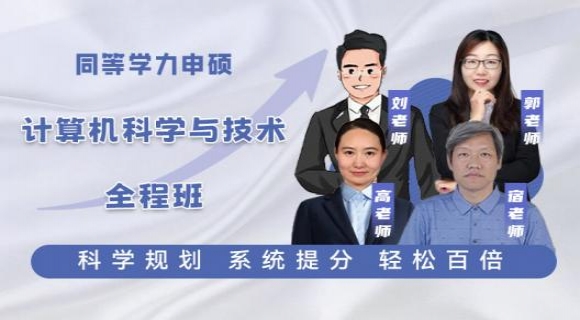
Almost eight years ago, the American educator Abraham Flexner published an article entitled The Usefulness of Useless Knowledge. In it , he argued that the most powerful intellectual and technological breakthroughs usually emerged from research that initially appeared “useless”, without much relevance to real life.
As a result, it was vital, Flexner said, that these “useless” efforts should be supported, even if they did not produce an immediate payback, because otherwise the next wave of innovation simply would not occur. “Curiosity, which may or may not produce something useful, is probably the outstanding characteristic of modern thinking,” he declared.
In 1929, Flexner persuaded a wealthy American family, the Bambergers, to use some of their donations to fund the Institute for Advanced Study(IAS) at Princeton to support exactly this kind of “undirected” research.
And it paid off: brilliant Jewish scientists fleeing from Nazi Germany, such as Albert Einstein, gathered at the IAS to explore undirected ideas. And while some of these, such as Einstein’s own work developing his early theory of relativity, did not initially seem valuable, many eventually produced powerful applications (though after many decades).
Without Einstein’s theory, our GPS tracking devices would be inaccurate by about seven miles,” writes Robbert Dijkgraaf , the current director of the IAS, in the foreword to a newly released reprint of Flexner’s article. Concepts such as quantum mechanics(量子力学)or superconductivity also seemed fairly useless at first—but yielded huge dividends at a later date.
The reason why the IAS is re-releasing Flexner’s article now is that scientists such as Dijkgraaf fear this core principle is increasing under threat. The Trump administration has released a projected budget that threatens to reduce funding for the arts, science and educational groups. Many Republicans believe that research is better financed by business or philanthropists(慈善家)than by government. But one striking fact about the past century is how much American innovation originated in federal projects; Silicon Valley would never have boomed were it not for the fact that state funding enabled the development of the World Wide Web, for example.
1. What may be the best title for the passage?
A. The value of Creative Ideas
B. The Importance of Basic Research
C. Innovation in Silicon Valley
D. In Praise of “Useless” Endeavors
2. According to Abraham Flexner, what is an important feature of modern thinking?
A. Curiosity
B. Application
C. Devotion
D. Passion
3. The “undirected” research (Para.3) refers to research ________.
A. not funded by government agencies
B. without any practical purpose in mind
C. with indefinite experimental methods
D. supported by non-profit organizations
4. Examples of initially “useless” research include all of the following EXPECT ________.
A. quantum mechanics
B. theory of relativity
C. superconductivity
D. GPS tracking devices
5. Flexner’s article was reprinted because ________.
A. businesses in Silicon Valley wish to put pressure on the government
B. Democrats believe that government funding should go to small business
C. Republicans argue that scientific research should be financed by business
D. some scientists worry that government will cut its funding

1.【答案】 D
【考点】 主旨题
【分析】本文的最佳标题可能是什么。通读全文,我们可以看出作者重点介绍的无用知识的有用性,通过普林斯顿高等研究院重新再版弗莱克斯纳的文章《无用知识的有用性》这一事件,详细阐述了最强大的知识和技术突破通常来自于最初看起来“无用”的、与现实生活没有太大关系的研究,文章中用大量事实来佐证这一观点。由此我们可以推断出本文的主题思想是赞扬无用知识的巨大贡献。所以,本题的正确答案是D,赞扬“无用”的努力。
【误项排除】选择项A:创造性思维的价值,原文没有提到这个内容;B:基础研究的重要性,这个答案不符合原文内容;C:在硅谷的创新,过于细节化,不符合原文内容;所以,这三个答案均为干扰项。
2. 【答案】 A
【考点】 细节判断
【分析】按照亚伯拉罕·弗莱克斯纳的观点,现代思维的一个重要特征是什么? 利用查阅式阅读,我们可以在第二段的最后一句话中找到相关信息:他宣称:“也许会也许不会产生有用的东西的好奇心,可能是现代思维的杰出特征。” 由此我们可以判断出好奇心是现代思维的杰出特征。所以,本题的正确答案是A。
【误项排除】选择项B:应用,用途,不符合原文内容;C:热爱,奉献,与原文内容不符;D:热情,激情,文章未提及;所以这三个答案均为干扰项。
3. 【答案】 B
【考点】 词语含义
【分析】第三段中的“无目标”(或“无指向性”)的研究指的是哪种研究。利用查阅式阅读,我们可以在第三段中找到问题所对应的句子是support exactly this kind of “undirected” research.通过指示代词this,我们可以判断这种研究指的是上文中提到的研究,即第一段最后一句话中“最初看起来“无用”的、与现实生活没有太大关系的研究”,还有第二段中第一句话“这些‘无用的’努力应该得到支持是至关重要的,即使他们没有立即产生回报”和第二段最后一句话中“也许会也许不会产生有用的东西”的研究。由此我们可以判断本题的正确答应是B,没有考虑任何实用目的。
【误项排除】选择项A:不是由政府机构资助的;C:用不确定的实验方法;D:非营利组织支持的;这三个选项的内容在原文中都没有提到,不符合原文内容。所以,这三个答案均为干扰项。
4. 【答案】 D
【考点】 细节判断
【分析】最初的“无用”研究的例子包括以下所有内容除了哪个以外。即问题问下面哪个不是最初的“无用”研究的例子。利用查阅式阅读,我们可以在第四段最后一句和第五段最后一句中找到相关信息:虽然其中的一些创意研究,比如爱因斯坦自己进行的早期相对论研究,一开始似乎并不是很有价值,但许多创意最终产生了影响巨大的应用效果(尽管经过了几十年)。如量子力学或超导这些概念似乎起初也相当无用——但在以后的日子里却产生了巨大的红利。由此我们可以判断出相对论、量子力学和超导这三个理论和概念都是最初无用的研究的例证。而GPS跟踪装置是相对论的实际运用,是有用的研究。所以,本题的正确答案是D。
【误项排除】选择项A:量子力学;B:相对论;C:超导;这三个都是起初无用的研究的例子。所以,这三个答案均为干扰项。
5. 【答案】 D
【考点】 引申推断
【分析】重新再版弗莱克斯纳的文章的原因是什么。利用浏览式阅读,我们可以中文章最后一段的第一句话中找到相关信息:现在,普林斯顿高等研究院重新再版弗莱克斯纳的文章的原因是,像戴格拉这样的科学家们担心这一核心原则正日益受到威胁。而根据文章上下文,我们可以推断出这一核心原则指的是对“无用”研究的资助和支持,而“无用”研究指的是如相对论、超导、艺术、科学和教育等基础研究。因此,本题的正确答案是D,一些科学家担心政府会削减对基础研究的资助。
【误项排除】选择项A:硅谷的企业希望向政府施加压力;这个答案与原文不符;B:民主党人认为政府的资金应该用于小型企业;原文没有提及;C:共和党人认为科学研究应该由企业来资助,文章中没有提及。所以,这三个答案均为干扰项。











